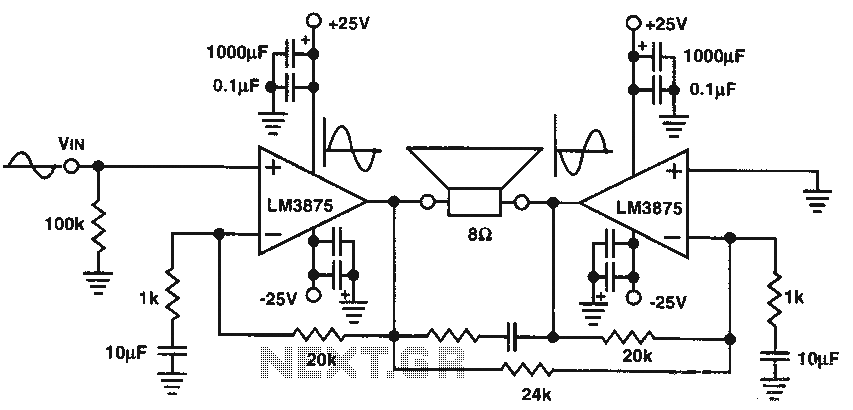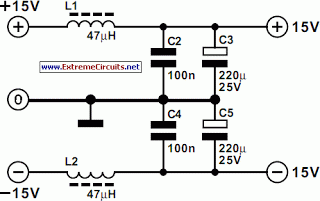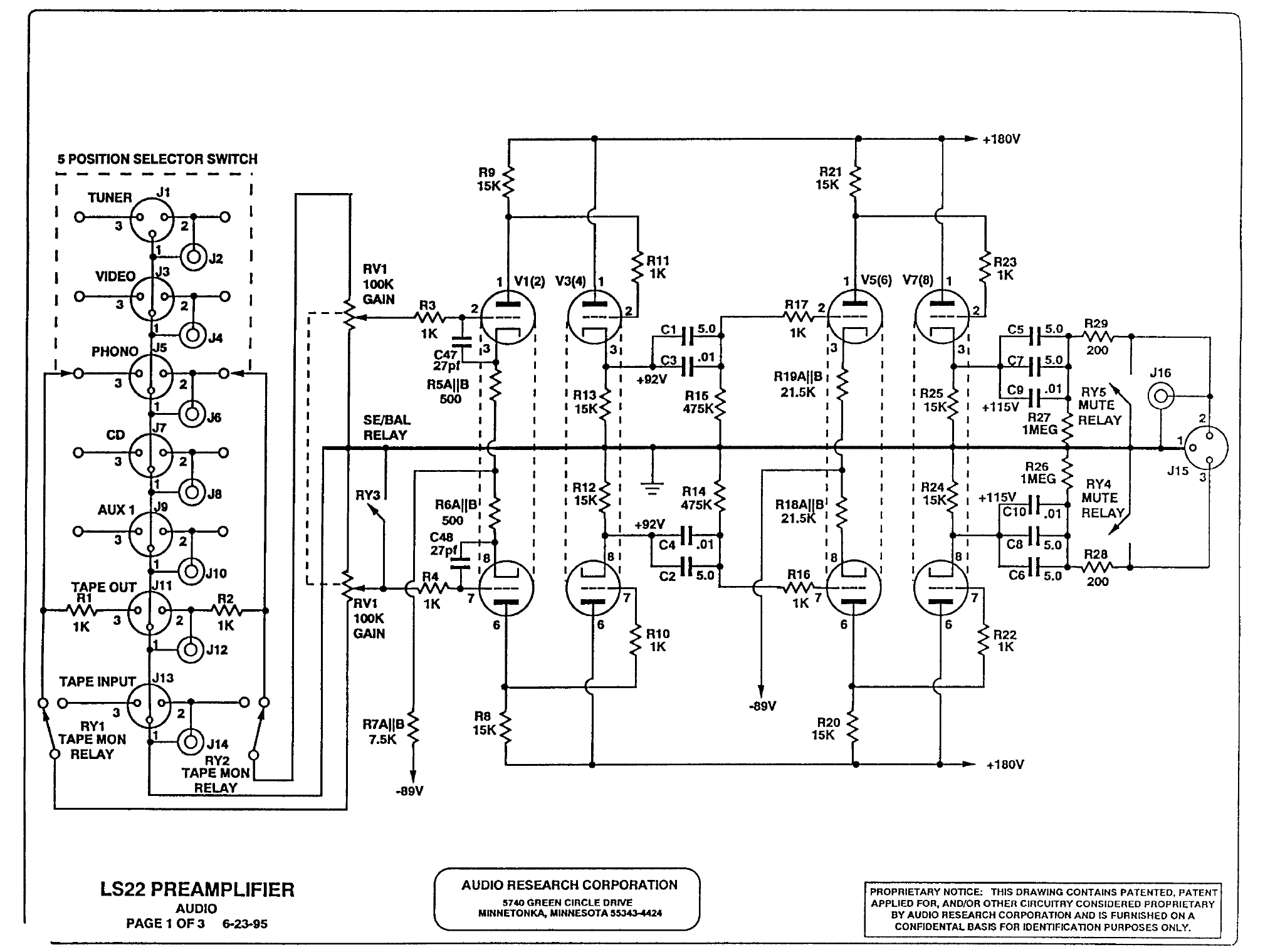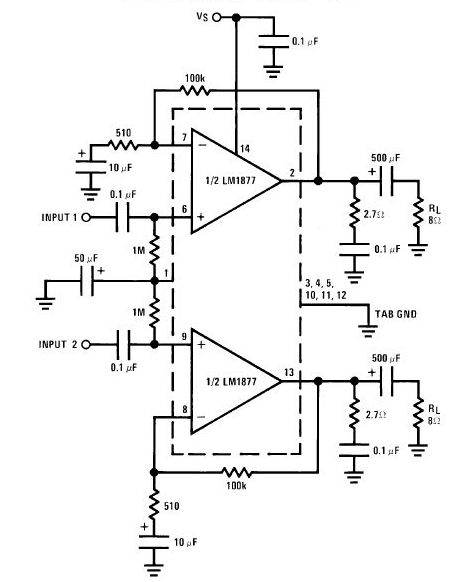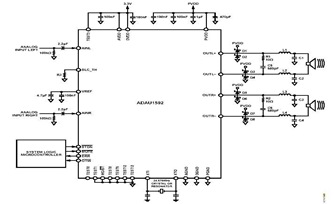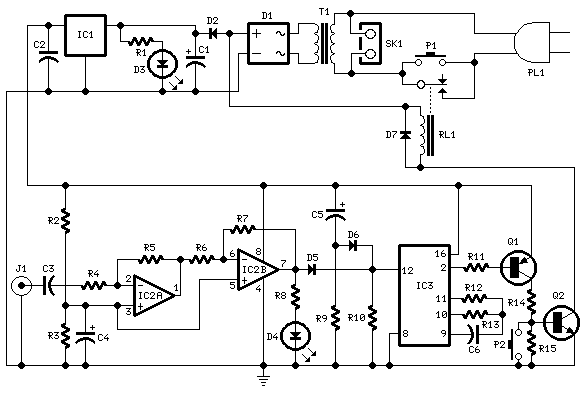
10.7-MHz IF amplifier
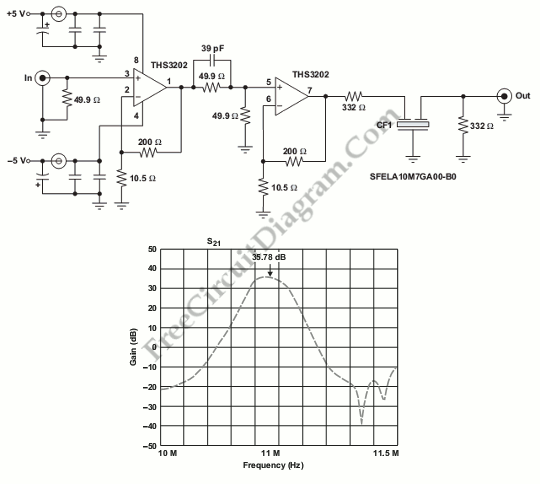
This is a 10.7-MHz intermediate frequency (IF) amplifier circuit. This circuit is utilized in various applications such as cell phone base station receivers (final IF) and FM broadcast receivers.
The 10.7-MHz IF amplifier circuit is a crucial component in radio frequency (RF) communication systems, particularly in the demodulation stage of FM receivers and in the final stage of signal processing for cell phone base stations. The design typically involves a combination of transistors, resistors, capacitors, and sometimes inductors, configured to amplify the intermediate frequency signal while maintaining signal integrity and minimizing noise.
Key components of the circuit include a high-gain amplifier, often realized using operational amplifiers or bipolar junction transistors (BJTs). The amplifier is designed to provide sufficient gain to ensure that the weak incoming signals can be processed effectively. The circuit may also incorporate filters to eliminate unwanted frequencies and enhance the desired signal.
Power supply considerations are essential, as the circuit requires stable voltage levels to function optimally. Bypass capacitors are commonly included to filter out noise from the power supply lines, ensuring a clean power source for the amplifier.
In terms of performance metrics, parameters such as gain, bandwidth, input and output impedance, and noise figure are critical for evaluating the circuit's effectiveness. The gain should be sufficient to boost the signal without introducing distortion. The bandwidth must encompass the 10.7-MHz frequency to ensure that the entire signal is amplified without loss.
The layout of the circuit is also vital; careful attention to component placement and routing can minimize parasitic capacitance and inductance, which can adversely affect performance. Shielding may be necessary to protect the circuit from external electromagnetic interference (EMI), which is particularly important in mobile communication applications.
Overall, the 10.7-MHz IF amplifier circuit plays a significant role in modern communication systems, enabling reliable signal processing in various RF applications.This is 10.7-MHz IF amplifier circuit. This circuit is used in many application such as cell phone base station receivers (final IF) and FM broadcast receivers 🔗 External reference
The 10.7-MHz IF amplifier circuit is a crucial component in radio frequency (RF) communication systems, particularly in the demodulation stage of FM receivers and in the final stage of signal processing for cell phone base stations. The design typically involves a combination of transistors, resistors, capacitors, and sometimes inductors, configured to amplify the intermediate frequency signal while maintaining signal integrity and minimizing noise.
Key components of the circuit include a high-gain amplifier, often realized using operational amplifiers or bipolar junction transistors (BJTs). The amplifier is designed to provide sufficient gain to ensure that the weak incoming signals can be processed effectively. The circuit may also incorporate filters to eliminate unwanted frequencies and enhance the desired signal.
Power supply considerations are essential, as the circuit requires stable voltage levels to function optimally. Bypass capacitors are commonly included to filter out noise from the power supply lines, ensuring a clean power source for the amplifier.
In terms of performance metrics, parameters such as gain, bandwidth, input and output impedance, and noise figure are critical for evaluating the circuit's effectiveness. The gain should be sufficient to boost the signal without introducing distortion. The bandwidth must encompass the 10.7-MHz frequency to ensure that the entire signal is amplified without loss.
The layout of the circuit is also vital; careful attention to component placement and routing can minimize parasitic capacitance and inductance, which can adversely affect performance. Shielding may be necessary to protect the circuit from external electromagnetic interference (EMI), which is particularly important in mobile communication applications.
Overall, the 10.7-MHz IF amplifier circuit plays a significant role in modern communication systems, enabling reliable signal processing in various RF applications.This is 10.7-MHz IF amplifier circuit. This circuit is used in many application such as cell phone base station receivers (final IF) and FM broadcast receivers 🔗 External reference
